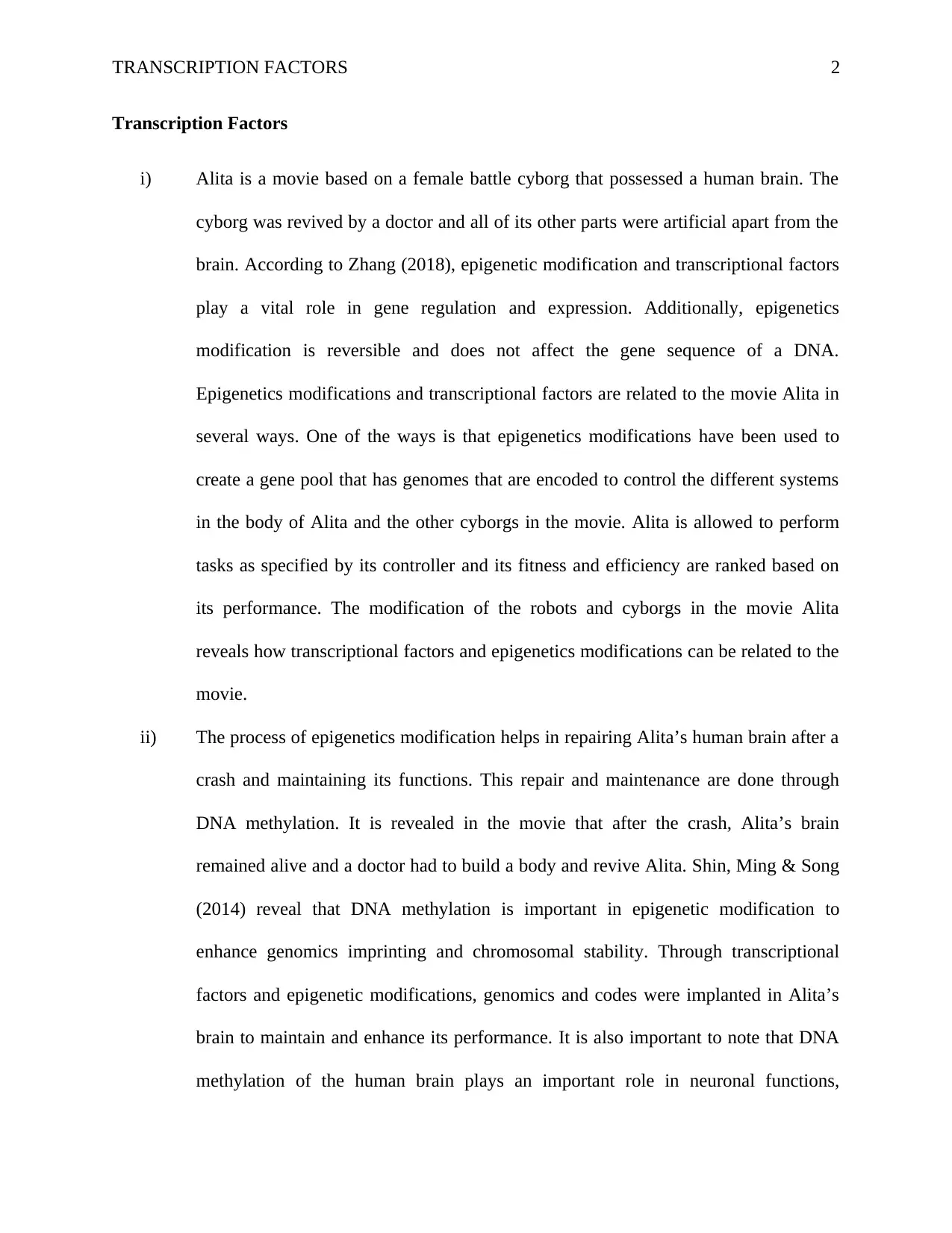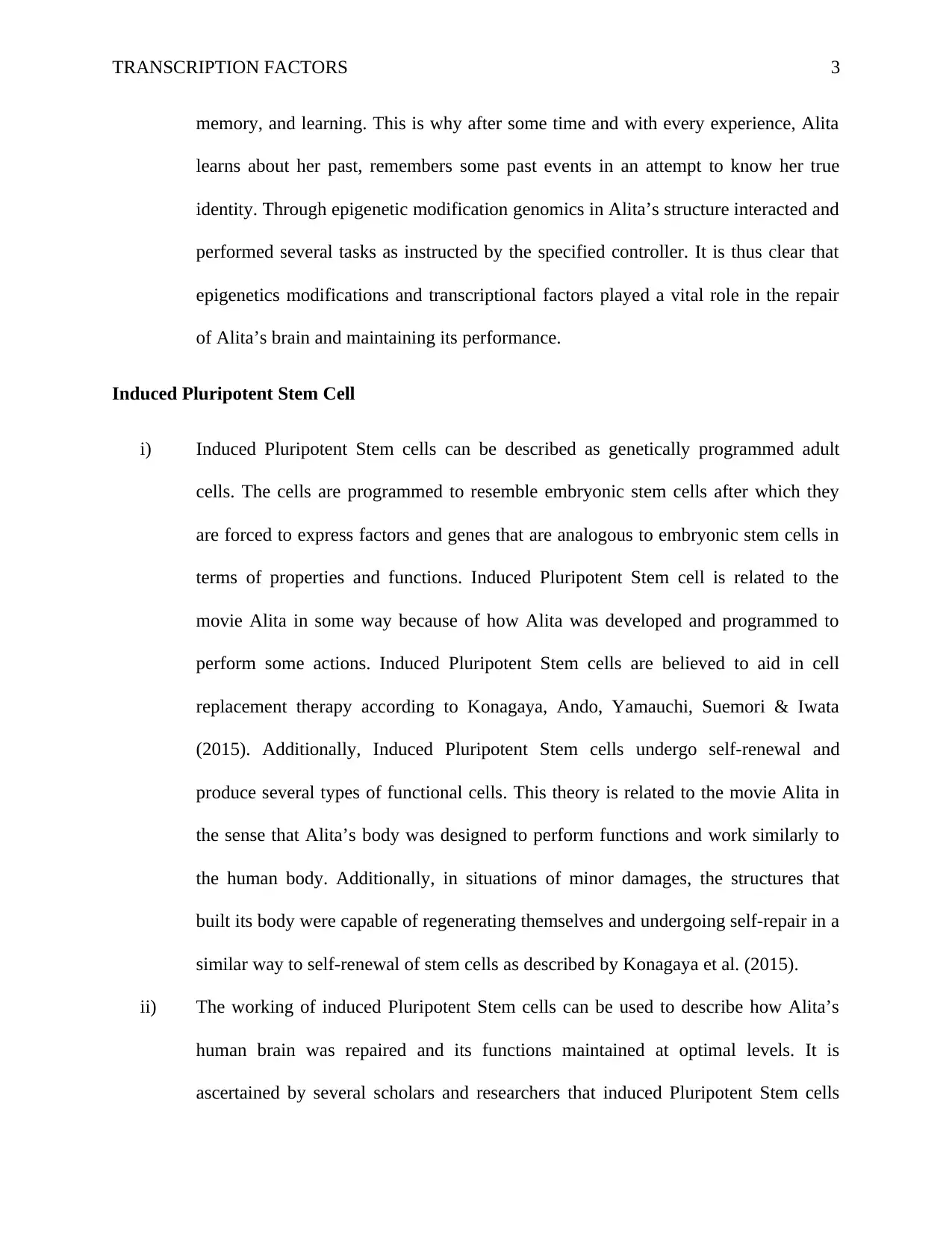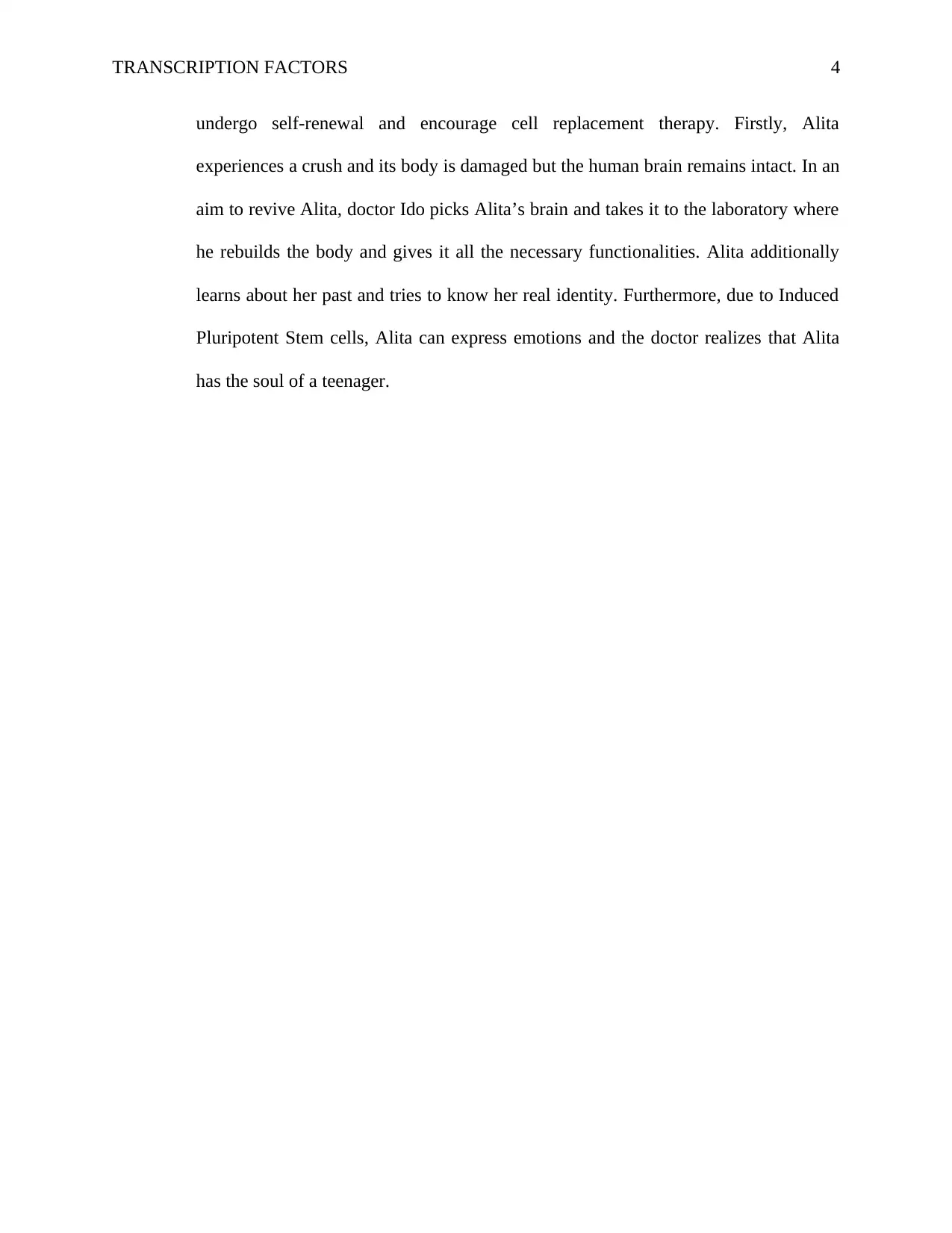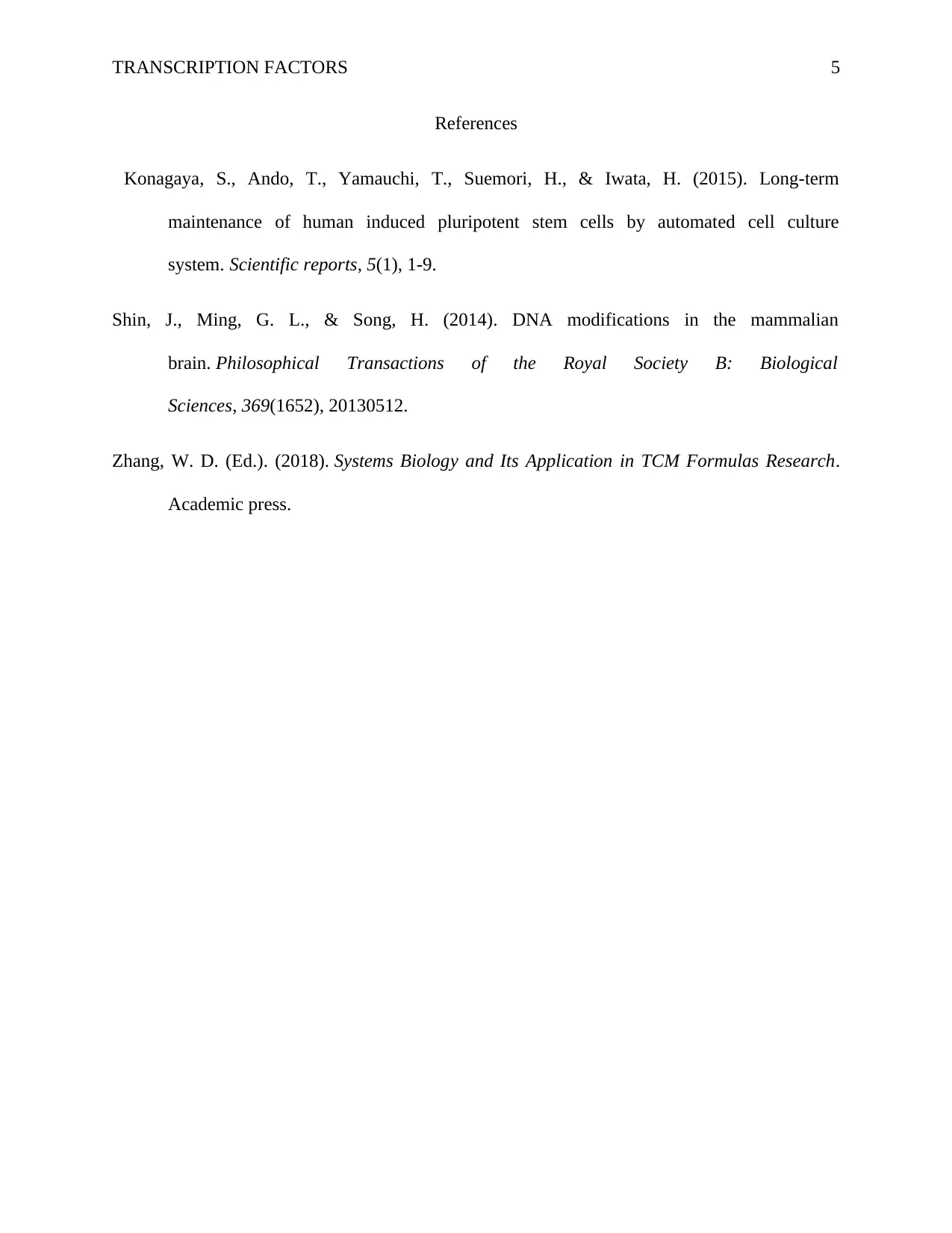Analysis of Transcription Factors and Alita: A Biology Report
VerifiedAdded on 2022/08/29
|5
|853
|20
Report
AI Summary
This report delves into the biological concepts presented in the movie Alita, focusing on the roles of transcription factors and epigenetics in gene regulation, cell repair, and neuronal function. The analysis highlights the significance of DNA methylation in maintaining brain function and the application of induced pluripotent stem cells in the context of Alita's cyborg body and brain repair. The report examines how epigenetic modifications and transcriptional factors can be related to the movie. The analysis explores how the processes of epigenetics modification helps in repairing Alita’s human brain after a crash and maintaining its functions, and how through transcriptional factors and epigenetic modifications, genomics and codes were implanted in Alita’s brain to maintain and enhance its performance. The relationship between induced pluripotent stem cells and Alita's development and functionality are also discussed, emphasizing the body's self-repair mechanisms and the potential for cell replacement therapy. References to relevant scientific literature support the discussion, providing a comprehensive understanding of the biological principles at play.
1 out of 5










![[object Object]](/_next/static/media/star-bottom.7253800d.svg)